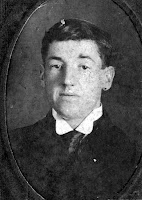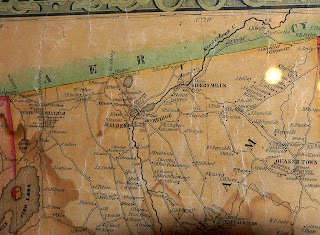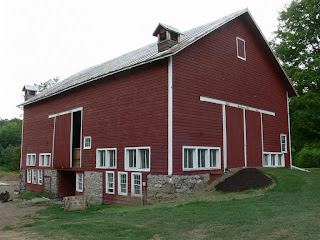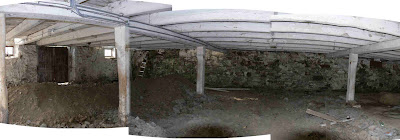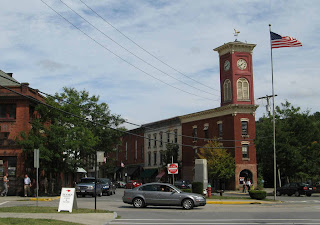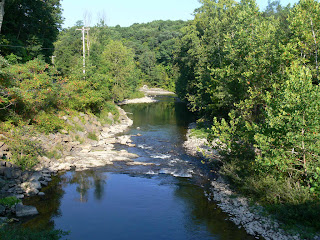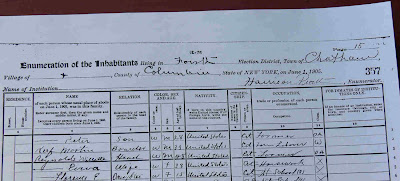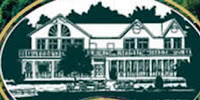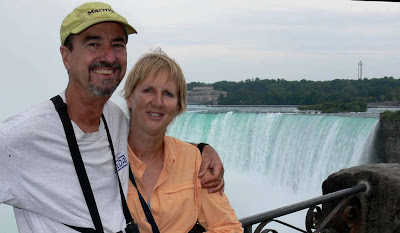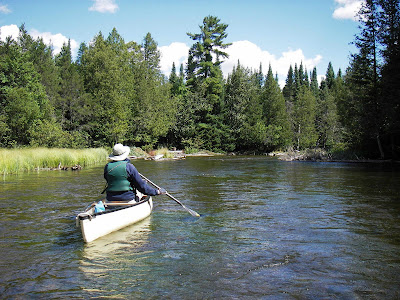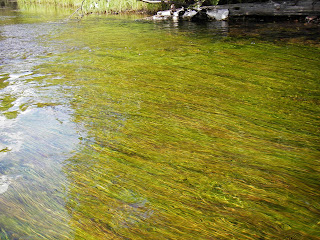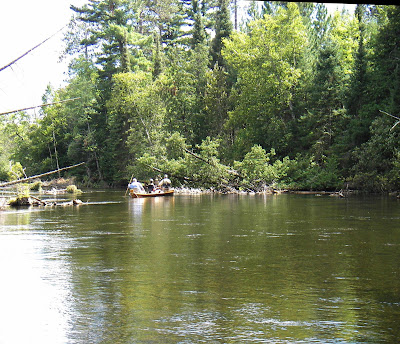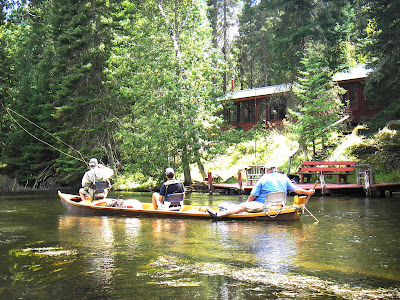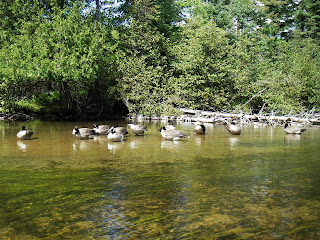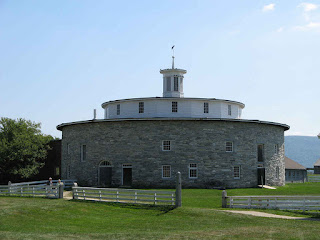 The round stone barn is an architectural gem and the only Shaker barn of its kind. Built in 1826, its circular design was a model of efficiency. Hay was unloaded from wagons into a wooden lined central storage area on the top floor. One level down, cattle were kept in stanchions, which radiated outward from a central manger. At the bottom level lay the manure pit, accessible by wagon.
The round stone barn is an architectural gem and the only Shaker barn of its kind. Built in 1826, its circular design was a model of efficiency. Hay was unloaded from wagons into a wooden lined central storage area on the top floor. One level down, cattle were kept in stanchions, which radiated outward from a central manger. At the bottom level lay the manure pit, accessible by wagon. 
The Shaker population reached its peak in the mid-19th century, with an estimated 4,000 to 5,000 Shakers. Strict believers in celibacy, Shakers maintained their numbers through conversion and adoption of orphans. Turnover was very high; the group reached maximum size of about 6,000 full members in 1850, but now has only four members left.
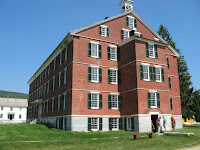
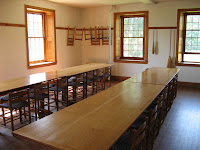

The Shakers became known as Shakers because of the trembling, whirling, and shaking that affected them during their spiritually ecstatic worship services. They believed that Christ's second coming was realized in their leader, Ann Lee, whom they called Mother Ann. The Shakers also believed in racial and gender equality, simplicity, and pacifism. They dedicated their lives to creating a working Heaven on Earth amidst the boundless opportunities presented by settlement of the New World.
The Shakers' mission was to live a perfect Christian life as portrayed in the Gospels and in the early Christian communities. The Shakers based their religion and their lives on celibacy, communal living, and the confession of sin. They attempted to attain spiritual and temporal simplicity, meekness, pacifism and perfection in all aspects of their lives.
The best-known Shaker beliefs are an emphasis on celibacy and simplicity in their daily lives. Women took an equal stance with the men in the Society. Celibacy was also part of the Shaker's efforts to build a more unified community by suppressing all individuality. At the core of this concept was the ideal of simplicity in all things -- dress, food and living arrangements. Thus everyone wore old-fashioned clothes of similar plain cut, women kept their hair severely simple, and the two genders lived in large dormitories.
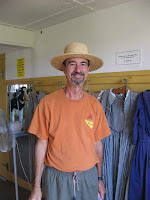
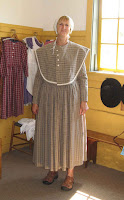
Though they expressed an unspoken love of beauty in their music and the quality of their furniture, neither was created solely for beauty. The music was used to reinforce the importance of God over the individual and the furniture was designed to be functional and non-intrusive, so as not to detract from the work or worship occurring in the rooms containing those furnishings.
Shakers were ahead of their time as they advocated a healthy lifestyle that encouraged spiritual serenity, balanced work and rest, and limited use of alcohol and tobacco. Shakers were widely respected for their knowledge of healing plants. Most communities cultivated their own extensive botanical gardens. Some villages developed thriving industries in the production of herbal remedies.
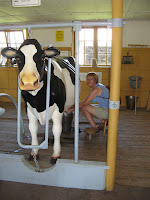
Shaker worship consisted of singing and dancing. The sect’s name came from the motions that early members made in spiritual ecstasy. Men in rows on the east faced women on the west. Shakers traditionally sang hymns without instruments for the sake of simplicity. Their meeting houses were mostly open space with an altar in the middle so that the initially spontaneous and later highly ritualized ecstatic experiences and dancing could be performed during worship services. Such excessive behavior was frowned upon by other Christian denominations and was a large part of the Shakers' radical reputation.
Children came into the community when their parents joined the community or when their parents died or could no longer take care of them. Shaker children went to school for 3 months, did chores and learned trades. When they reached the age of 18, they could choose to become Shakers or leave for the world. Typically no more than 10 percent of the children cared for lived their lives out as believers.
The Shakers developed a wide variety of crafts, trades, and industries, including woodworking and metalworking, basketry, broom making, and much more. They developed their own water-powered mills for grinding grain, sawing wood, and manufacturing textiles. The Shakers were highly regarded for their honesty and industriousness, and for the quality of their products, which were marketed throughout the region as an important source of income for the communal society.
